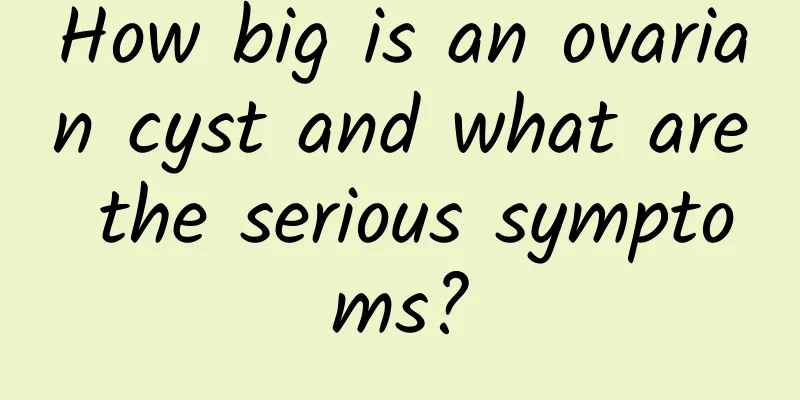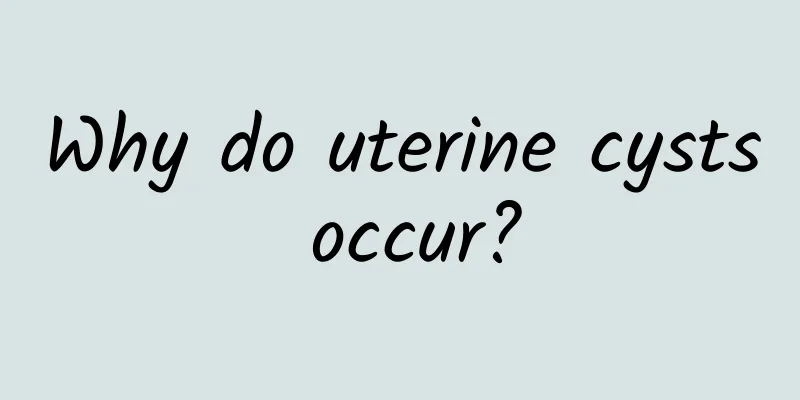What ointment is effective for vulvar leukoplakia and trichomoniasis? What are the symptoms of trichomoniasis?

|
Vulvar leukoplakia and trichomoniasis are both common gynecological diseases. For the treatment of these two diseases, ointment is a common treatment method. So, what kind of ointment should we use for vulvar leukoplakia and trichomoniasis? At the same time, what are the symptoms of white trichomoniasis? This article will give you a detailed answer. 1. What ointment is effective for vulvar leukoplakia Vulvar leukoplakia refers to white patches on the female vulva, often accompanied by discomfort such as itching. When treating vulvar leukoplakia, ointment is one of the commonly used external treatment methods. The following are several commonly used ointments: 1. Hormone ointments: such as fluocinolone acetate cream, triamcinolone acetate cream, etc. These ointments can reduce inflammatory reactions and relieve itching and other uncomfortable symptoms. 2. Antifungal ointments: such as ketoconazole cream, clotrimazole cream, etc. These ointments can inhibit the growth of fungi and have obvious therapeutic effects on fungal infections in vulvar leukoplakia. 3. Antiviral ointments: such as acyclovir cream, tilminavir capsules, etc. This type of ointment can inhibit viral replication and also has a certain therapeutic effect on viral infection in vulvar leukoplakia. 2. What ointment is effective for trichomoniasis? Trichomonas is a common gynecological disease, and its symptoms include increased vaginal discharge, yellow-green discharge with a foul odor, and vulvar itching. The following are several commonly used ointments: 1. Anti-trichomonas ointments: such as metronidazole cream, clobarbital ointment, etc. This type of ointment can directly act on Trichomonas and inhibit its growth and reproduction. 2. Anti-inflammatory ointments: such as anti-inflammatory Liqi cream, calamine lotion, etc. This type of ointment can relieve the inflammatory response caused by Trichomonas and reduce symptoms such as itching. 3. Antifungal ointments: For fungal infections complicated by Trichomonas infection, you can consider using antifungal ointments, such as ketoconazole cream, clotrimazole cream, etc. 3. Symptoms of Trichomonas Trichomonas infection, also known as trichomoniasis, often presents with the following symptoms: 1. Increased vaginal discharge: Trichomonas infection can cause an abnormal increase in women's vaginal discharge, which is yellow-green in color and sometimes accompanied by a strong foul odor. 2. Vulvar itching: The inflammatory response caused by Trichomonas infection can lead to vulvar itching, and patients often feel very uncomfortable. 3. Frequent urination and urgency: Trichomonas infection can irritate the urethra and cause symptoms such as frequent urination and urgency. Conclusion: For vulvar leukoplakia and trichomoniasis, ointment is one of the commonly used treatments. For vulvar leukoplakia, hormone ointments, antifungal ointments, etc. can be used; for trichomoniasis, anti-trichomoniasis ointments, anti-inflammatory ointments, etc. can be used. At the same time, the symptoms of trichomoniasis include increased leucorrhea, vulvar itching, frequent urination, and urgency. Finally, when treating these two diseases, please follow the doctor's instructions to use appropriate ointments and seek professional guidance in time. |
Recommend
How to make a clear diagnosis of late menopause
We must have a clear understanding of the differe...
What are the specific causes of adnexitis?
What are the specific causes of adnexitis? Adnexi...
Can women with cervicitis eat Lingzhi? What are the dietary taboos for women with cervicitis?
Can I eat Lingzhi if I have cervicitis? Regarding...
How long does it take to get menstruation after ectopic pregnancy surgery?
Surgery is generally a good treatment for ectopic...
Minimally invasive pelvic interventional treatment of pelvic inflammatory disease has the following advantages
There are many treatments for pelvic inflammatory...
How to completely cure dysmenorrhea
How can dysmenorrhea be completely cured? Women&#...
The main manifestations of the harmful effects of cervicitis
Among the many gynecological diseases, the high i...
What are the treatments for chronic adnexitis?
What are the treatments for chronic adnexitis? I ...
What are the precautions for ectopic pregnancy that women should know
There are more and more women suffering from ecto...
Several preventive measures for cervical hypertrophy
Patients with cervical hypertrophy must choose th...
What can women do if they suffer from cervical erosion? There are six ways to treat cervical erosion with traditional Chinese medicine.
In life, what should female friends do if they su...
Prolonged menstrual period is a common symptom of menstrual irregularity
Experts say that there are actually many symptoms...
How does Bartholinitis occur?
Due to the special physiological structure of wom...
Is diarrhea in early pregnancy a threat of miscarriage?
Diarrhea in early pregnancy is generally not a sy...
People should pay attention to the common symptoms of multiple uterine fibroids
Multiple uterine fibroids are a type of gynecolog...









